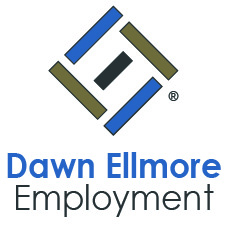A trade mark is a name, symbol, logo, visual device or word that shows the difference between a service or product and other similar services and products. It could be simply a phrase or word, an image or both.
In common understanding, a trade mark can be synonymous with a brand. While marketing and advertising people would argue that a ‘brand’ also incorporates tone of voice, a ‘personality’ and much more, an easily recognisable trade mark is often what customers remember.
How do you obtain a trade mark?
To register a trade mark for your services, company or product, then it must be accepted at the UK Intellectual Property Office (UKIPO).
This also applies to the use of the ® symbol, which is legally binding. While you will often see ™ next to a brand, name or logo, this doesn’t actually mean anything in legal terms. The ® symbol, on the other hand, denotes a legally registered trade mark by the UKIPO.
It is illegal to use the ® symbol on an unregistered trade mark, but most companies choose to use the ™ symbol in their designs.
How is a trade mark accepted?
To be accepted by the UKIPO, a trade mark must be distinctive for the services or products provided. This could be a business slogan, name or book title, for example.
A trade mark won’t be registered or accepted if:
· It’s not distinctive.
· It uses a protected emblem.
· It’s crude or offensive.
· It’s commonly used in your sector.
· It’s promoting something that’s against the law.
· It describes the goods or any characteristics of the goods or services.
· It is a 3D shape.
· It is deceptive in terms of what you’re offering.
How do you register a trade mark?
The first step should be to check whether your chosen trade mark has already been registered by someone else. The UKIPO website offers a database of registered trade marks that can be searched free of charge.
If you find a trade mark that looks or sounds similar to yours for the same or similar services or goods then you should consider whether or not to file an application. If you do decide to proceed, the UKIPO will advertise your trade mark in the Trade Marks Journal. This will notify the owner of the trade mark who can then lodge an objection during a certain timeframe.
The next stages are:
1. Data capture – the UKIPO publishes the details of the application on its website.
2. Examination – the UKIPO decides whether your trade mark application is acceptable.
3. Publication – your trade mark is then open to someone objecting to it for a set period of time.
If there are no objections, then it usually takes about four months for a trade mark to be formally registered. If objections are raised then it can take longer. From the moment it’s registered, the trade mark is valid for a decade.
Trade mark facts to know
· The trade mark database isn’t comprehensive and so shouldn’t be used to conclusively decide whether a similar trade mark exists.
· The examiners at the UKIPO will conduct the thorough search.
· Your application fee will never be refunded.
· After your application is submitted you can’t change your trade mark.
· If someone opposes your trade mark and you decide to object, if you lose then you could be liable for costs.
· Every trade mark must be renewed after ten years to remain registered.
Professional advice
The only way to formally and legally registered your trade mark in the UK is with the IPO. Their website has basic advice regarding trade mark applications and can be used as a resource. At Dawn Ellmore, we’d always advise meeting someone with expertise to chat through the details.
About Dawn Ellmore Employment
Dawn Ellmore Employment was incorporated in 1995 and is a market leader in intellectual property and legal recruitment.



